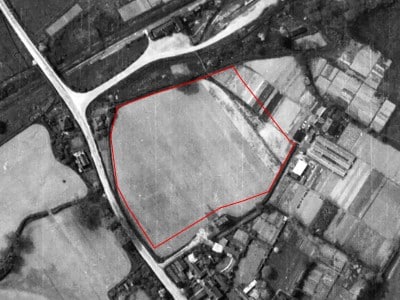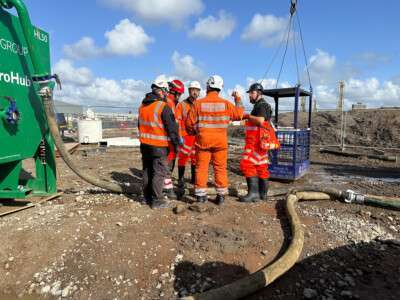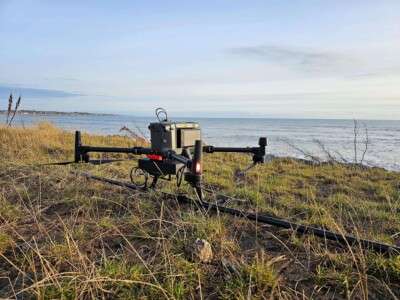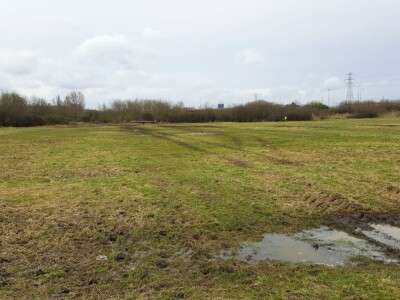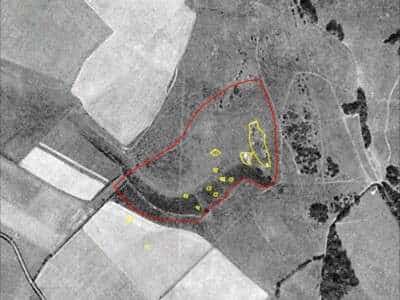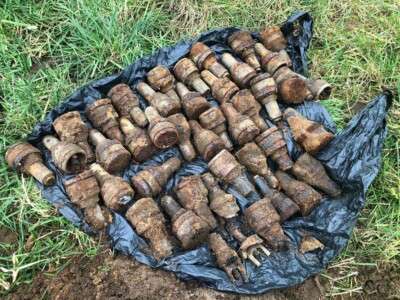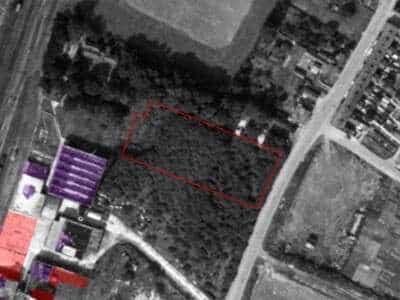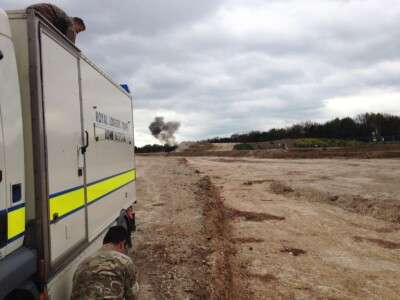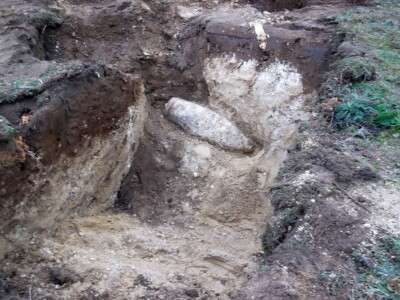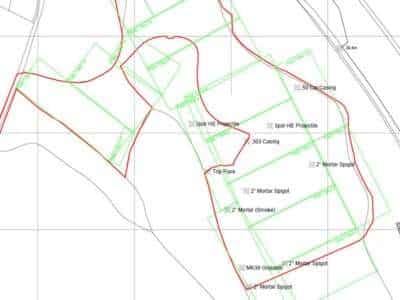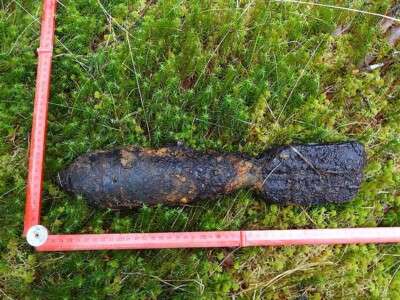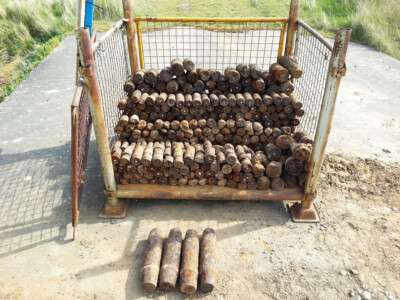Home » Resources » Case Studies »
Case Study Overview
Client Project Category
Environmental Remediation
Project Duration
September 2020 – March 2023
950+
Items of UXO discovered
5.4 tonnes
Free From Explosive (FFE) ordnance scrap removed
6,500m3
Amount of soil remediated
Challenge
In September 2020, 1st Line Defence was contacted to provide UXO Risk Mitigation Support on a project within a former military training area in Nottinghamshire.
The client’s brief was to investigate and remediate high levels of zinc, copper and lead discovered during soil tests on site, resulting from the historic military use of the area. Groundwork was planned to commence in 2022, which included boreholes and ground excavations over a seven-month period.
Process
Stage 1 – Detailed UXO Risk Assessment
1st Line Defence completed a Detailed UXO Risk Assessment in November 2020. The study confirmed that the site and the area to its west were historically utilised for ordnance demolition. Evidence of demolition trenches and pits were observed in aerial imagery from the late 1940’s and early 1950’s. The site location was still labelled as a ‘Demolition Area’ on military mapping from the 1970’s.
Such areas were used by the military for the purposes of disposal of unwanted explosive ordnance and munitions. The process usually comprised the digging of ‘burning pits’ where items could be collected and set ablaze or detonated. The remains could then be buried and were generally considered as safely disposed of by contemporary military authorities.
No evidence of previous clearance operations on the site area could be found, the area was classified as ‘High-Risk’ and it was recommended that the site be investigated by a UXO Support / UXO Disposal operation.
Stage 2 – Risk Mitigation Strategy
As part of the soil remediation work, a surface strip across the site area needed to be undertaken. 1st Line Defence recommended UXO Watching Brief support to these excavations. The material from the remediation areas would then be sifted and cleared utilising excavator mounted sifting buckets, industrial conveyors and hand-held searching equipment.
This methodology would allow UXO-related items and ferrous and non-ferrous scrap to be removed from the soil. The works would result in stockpiles of processed material which could subsequently be Quality Checked to make sure that the UXO risk had been reduced to as low as reasonable practicable (ALARP), in line with CIRIA C681 guidance.
Stage 3 – UXO Support
In October 2022, ground works began and 1st Line Defence UXO Specialists were mobilised on-site to provide UXO Watching Brief support to the excavations – when remnants of explosive ordnance were identified followed by live ordnance finds.
Due to the quantity of finds, the project involved a team of nine UXO Specialists supporting the works at any given time.
Following separation of the soils from items of ordnance or associated scrap, all items were relocated to a safe area for inspection and certification – as either a live item of ordnance or Free From Explosive (FFE).
All items identified as FFE were separated, removed from site and disposed of safely and appropriately. The remaining processed soils were collected and removed from site by the client on a regular basis, following the material having been searched and passed quality assurance (QA) trials. The items of live UXO, or those which could not be deemed to be FFE, were disposed of on-site either by explosive means or by thermite.
Stage 4 – UXO Disposal
Due to the large volumes of live explosive ordnance (or ordnance which could not be deemed to be FFE), discovered on-site, local police/military EOD teams could not support the project – and all UXO Disposal operations were managed directly by 1st Line Defence.
The relevant explosive storage licences were acquired, and a dedicated disposal area comprising sandbags and shipping containers was constructed. Alarmed and monitored explosives storage magazines were installed on site to hold the UXO finds and demolition explosives when required.
Standard demolitions were undertaken using plastic explosives, with several detonations occurring on each scheduled demolition day. Each demolition was undertaken in accordance with the site-specific Explosives Management and Disposal Plan. This included strict safety cordons on demolition days to prevent members of the public accessing the area.
On occasions where full-scale disposal using explosives was not practical, a secondary disposal methodology was provided via the use of specialist Thermite lances. The use of Thermite was particularly useful when items were deemed potentially unsafe or too hazardous to move.
The lances focus a flame with a temperature of more than 2000oC that burns through the targeted ordnance, igniting the explosives within, allowing these to deflagrate – the item would then be inspected and certified FFE.
Stage 5 – Verification
1st Line Defence undertook a Non-intrusive UXO Survey of the site area to verify the level of clearance that had taken place.
The data collected in 2023 (shown below right) was compared to a survey undertaken on-site in 2015 (shown below left), and confirmed that the area of the burns pits had been successfully cleared / remediated.
The annotated false-colour overlay below shows the results in more detail, with annotations showing various site features.
Following the remediation phase of works and subsequent UXO Surveys, the client was issued a report and confirmation that the risk from UXO had been reduced to ALARP status.
Five interesting facts
- Between the 16th March 2022 and the 8th March 2023, approximately 5.4 tonnes of FFE Ordnance scrap was recovered from the site.
- During the same date range, 967 individual items of ordnance (suspected live) were identified and removed from the ground.
- At the height of works on site, 1st Line Defence deployed up to nine operatives on-site at any given time.
- As of the 8th March 2023: 1,000kg of Explosive Ordnance scrap was recovered.
- A total of 6,215 m3 of soil was excavated during the works.
Outcome
Following approximately two years of site work and over 18-months of ground remediation works, the risk from UXO was reduced to ALARP status – no further items were discovered and the project was completed on schedule.
Click on the following link to download a PDF copy of the Case Study for Nottinghamshire.
Latest Case Studies
Do you have a project in Nottinghamshire? Need advice but not sure where to start?
If you need advice about UXO risk mitigation in Nottinghamshire, contact us today and we will guide you through the process.
Contact Us
* indicates required fields
